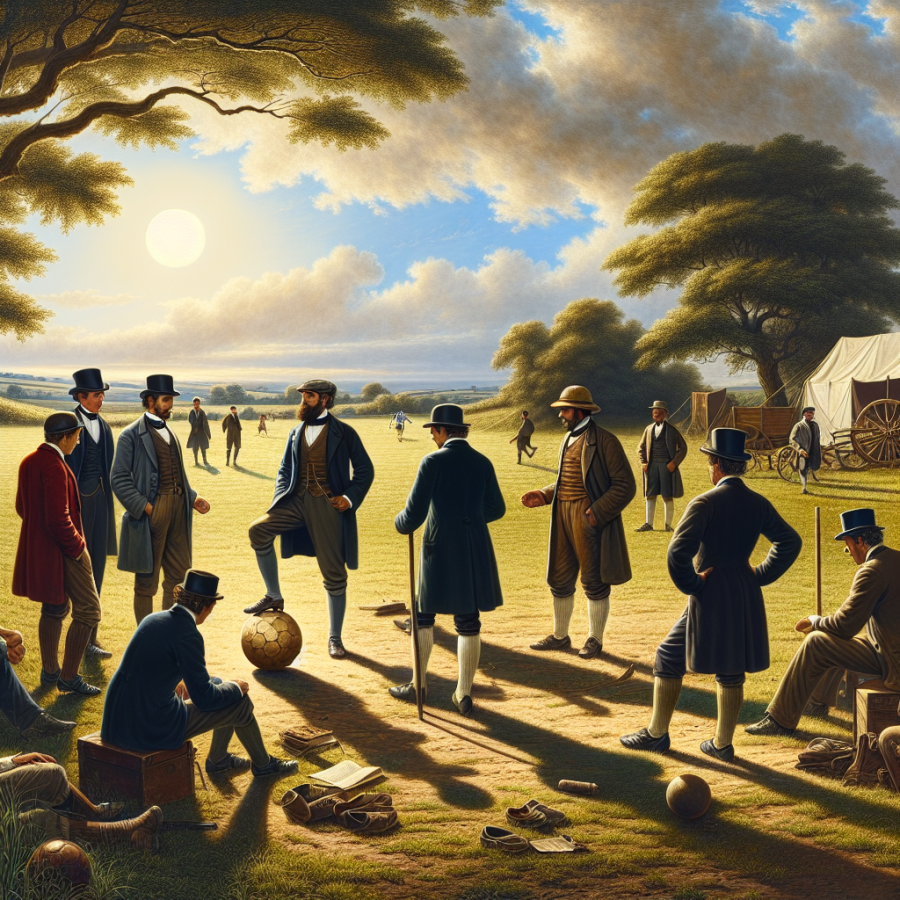Tracing Back the Roots: The Origin of Soccer
Soccer's origin can be traced back over 2,000 years. The starting point of this popular sport is littered throughout history, across several continents, in various cultures and civilizations. Although the exact origin is not known, it became standardized and recognized as the sport we see today in England in the mid-19th century.
Throughout history, there are references to games that resemble soccer. The ancient Greeks played a game called Episkyros, which involved kicking a ball towards a goal. At the time, soldiers used this game as part of their military training. Meanwhile, in the Han Dynasty of ancient China (206 BC-AD 220), there was a game known as Cuju. This game involved kicking a leather ball through an opening into a net and was popular among the military, nobility, and common folk.
Turning towards Central and South America, we can see the roots of soccer in the games of the Indigenous people. The Mesoamerican ballgame, played by ancient pre-Columbian cultures like the Mayans and Aztecs, involved the use of a rubber ball that needed to be maneuvered through stone hoops attached to a wall.
However, it was during medieval times in England that forms of football (as it's called in most parts of the world) that bore significant resemblance to modern soccer started to emerge. These versions of the game, though, were often chaotic, violent, and quite disparate from each other.
A significant turning point in the evolution of soccer was the establishment of the Cambridge Rules in 1848. An attempt to sort out the varying rules applied to the game, it provided a more standardized format. It included the introduction of an offside rule, prohibition of the use of hands to move the ball, and the tactic of goal kicking.
In 1863, the formation of the Football Association in England marked the first governing body for the sport, providing even more standardized rules. It was at this point that soccer was distinguished from rugby, another sport with shared roots, giving rise to the soccer that we are familiar with today.
The spread of soccer outside of Britain began in the late 1800s. It reached parts of South America, mainland Europe, and later the rest of the world, mostly due to British workers and expatriates.
Read also:
Understanding the Role of the Golf Pressure Plate: An In-Depth Video Analysis
The Evolution of Soccer: From Ancient Times to the Modern Game
Soccer, commonly referred to as football in most parts of the world, has a rich history that can be traced back to ancient times. It is one of the oldest games in the world, and its roots can be traced back to over 2,000 years ago in ancient China. Here, a game called ‘cuju’ was popular, which involved using any part of the body except for hands to keep a leather ball from hitting the ground.
However, it wasn't just China where forms of soccer were being played. Civilizations in Central America, such as the Maya and the Aztecs, also played a similar ball game. For the Aztecs, the game was not just a sport but a ritual that was offered to gods. In their traditional game known as ‘ullamaliztli,’ the aim was to get a rubber ball through a stone hoop using any part of the body except for hands.
In ancient Greece and Rome too, a form of soccer known as ‘harpastum’ was popular. This game consisted of two teams and had rules similar to soccer and rugby combined. Strikingly, in mediaeval Europe, a form of football known as ‘mob football’ got attention as it involved an unlimited number of players and had few fixed rules. It was so chaotic that it was often criticized and even banned in many towns and cities.
Though the origins of soccer can be traced back to ancient times, the game, as we know it today, originated in England in the early 19th century. This was when some standard rules were established. The rules were codified in England by the new Football Association in 1863, where it was officially named ‘association football’. This was later slanged to 'soccer' to distinguish it from Rugby Football.
From here, soccer began to evolve rapidly, and it spread throughout the British Empire. This period saw the emergence of professional soccer players and the first official leagues. One of the very first official soccer games took place in 1888, which was organized by the English Football League.
In the 20th century, the game continued to grow, and the first FIFA World Cup was held in 1930. This World Cup showcased considerable advancement in rules and equipment such as standardized balls and goal sizes.




